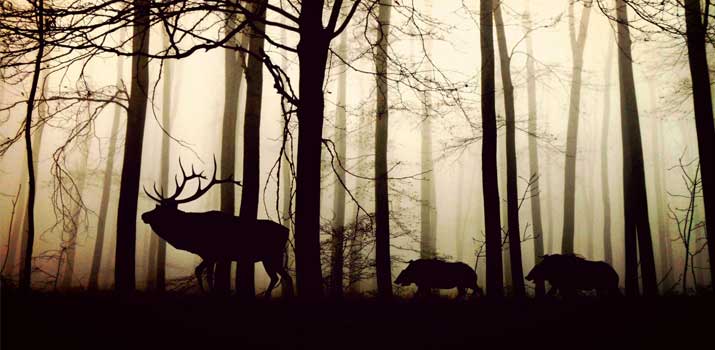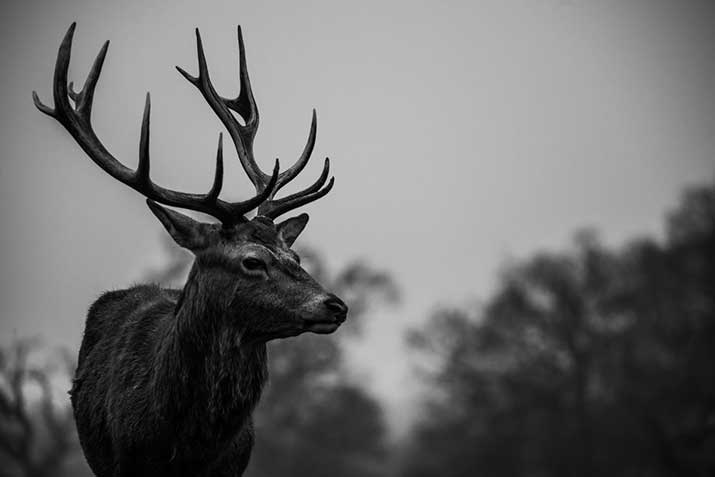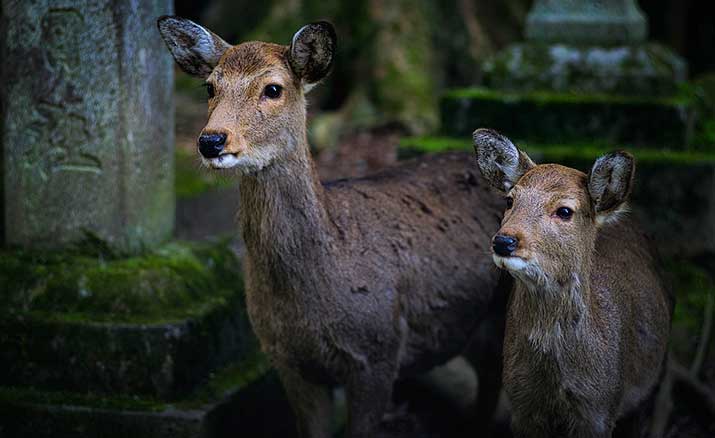
Deer are reclusive creatures at the best of times, doing their best to stay out of sight, and thus, out of harm’s way, so you’d imagine they’d be particularly inclined to hunker down in a safe, cozy space when the weather takes a turn for the worst.
Due to their size, deer don’t get a lot of shelter from the elements out in the wild, but they will seek out places to rest with significant cover in certain scenarios, yet, as it happens, rain isn’t on their list of things to take cover from.
Why is this the case?
Well, there are a few reasons why deer don’t mind having a prance in the rain, so let’s discuss the matter in more detail.
Why Do Deer Move In The Rain?
Most of the time, deer weather the rain out of necessity, but they’re also known to use a downpour strategically. Allow me to elaborate…
Sonic Blanket
There are lots of reasons to avoid the rain…
it’s often cold, it leaves you moist and uncomfortable, and it makes all terrain far more dangerous and slippery, but for deer, there’s one primary benefit that trumps all these negatives — Rain is NOISY!
During rainfall, there are millions of watery collisions as water droplets fall into the landscape, forming a blanket of white noise capable of masking comparatively quiet sounds.
Deer take full advantage of this opportunity to engage in some sonic stealth.
During rainfall, deer will often sneak out of hiding in order to forage for food or travel, as predators won’t be able to hear their movement over the noise of the weather.
So, what would be a risky move in pleasant weather becomes a viable option for deer when the heavens open up.
They tend to utilize the wind to mask their movements as well, which is remarkably intelligent, but there’s one flaw in their weather-based strategies… us.

Hunters have cottoned on to the idea that deer are more likely to be active during rainfall, and will be lying in wait for one or more to make a move and head out into an open space.
That said, deer have a secret superpower in the rain that gives them a fighting chance against riflemen hoping to take advantage of increased movement in their habitat.
Have you ever been out after a light rain and noticed how pungent everything smells?
You can smell the cut grass in the park from two blocks away, the flowers in your garden from down the street, and the dampness of forestry from your front door.
This is because moisture holds scent in place, and as it typically arrives with low-pressure weather fronts, there is less wind to carry scent up and away,.
This means deer can use their super powerful sense of smell to gain a vastly enhanced awareness of their surroundings.
In light of this, to avoid spooking their target, hunters have to keep their distance during and after rainfall, which makes for a much harder shot.
Deer Have Oily Fur
Much like our own skin, deer skin produces oil, a substance that coats their fur over time, and as I’m sure you’re aware, oil and water don’t play nice.
Well, it’s not that they don’t play nice as much as it’s that they don’t play at all.
If you ever see oil in water, you’ll notice that it doesn’t merge, rather, oil will always float on top of water, which in scientific lingo means they’re immiscible — They will always remain separate entities.
This is a BIG win for deer, as – much like ducks – rain slips right off them, so their fur doesn’t ever really get wet, enabling them to stabilize their temperature remarkably well, even in very cold weather.
Life Goes On Despite The Weather
Another reason deer move in the rain (or wind) is that they often have to in order to forage for food.
It’s fine for us humans to hunker down and wait for bad weather to pass, as we have kitchens full of food, but deer have no such luxury, and they love to eat!
On average, a deer will eat between 6 and 8% of its body weight every single day, so come rain or shine, they’ll be out there looking for a bite!
And if the rain coincides with a dip in temperature, deer will have to bolster their diets in order to consume enough fuel to stay warm through the cold spell.
They may also need to move to an entirely new area to find sufficient food for the herd, and such an urgent move requires immediate action, regardless of the weather.
Protecting Fawns
Does tend to leave their fawns in cover during the day and night, only returning to feed them in the crepuscular hours.
They do so to prevent nocturnal and diurnal predators from tracking down their resting spot, so rain or no rain, they must head out and establish some distance between themselves and their young.

Taking Geographical Differences Into Consideration
The thing to understand about the points discussed above is that they’re very general assertions.
Yes, deer are known to head out into the rain, but it’s not a given.
There are certain variables at play that inform such a decision, the most important of which is geographical location.
For instance, a New England herd will experience a lot of rainfall, while deer native to Texas won’t get much rain at all, meaning their reaction to a downpour will be completely different.
The Texan deer may use it as a chance to cool off, but not as a tactical move to forage for food, while coastal deer will be more in tune with the strategic potential of rainfall.
Downpour Intensity Matters
Deer fare very well in rain… but there’s a limit. At a certain intensity, the advantages a deer gains during wet weather are eclipsed by the negative aspects of facing extreme weather.
Researchers have found that particularly violent downpours result in less individual and herd movement.
Final Thoughts
Do deer move in the rain?
Yes, they are known to, but their specific behavior will be determined by their appetite, the climate of their habitat, and the ferocity of the rain.
They’ll also take time of day into account as they’re most at risk of predation during daylight and nighttime hours, meaning the benefits of rainfall may not be worth the risks.
